Your cart is currently empty!
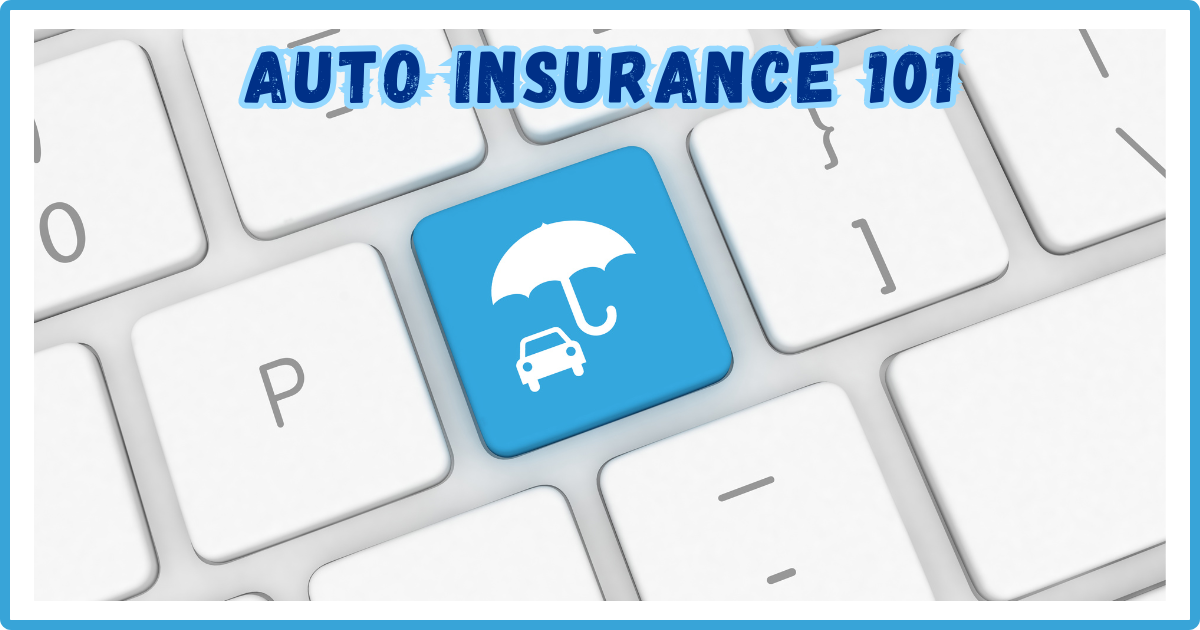
Insurance is essential but it can be difficult to understand and overwhelming to navigate. It doesn’t help that there is a lot of incorrect information out there which can lead you to being underinsured or even overpaying for your coverage. If you have ever had a hard time understanding your auto policy, you are not alone!
If you are looking to get a better understanding of your insurance policy then make sure you check out The Survival Lady’s Knowing Your Auto Policy series. This 5 part series breaks down everything you need to know about auto insurance policies in an easy-to-follow format. Enjoy free resources with each post to help you understand your coverage and make informed decisions.
The Survival Lady’s Knowing Your Auto Policy Series:
- Auto Insurance 101: The Basics
- Auto Insurance 102: How It Works
- Auto Insurance 103: Myth vs. Fact
- Auto Insurance 104: Choosing Your Agent
- Auto Insurance 105: Reviewing Your Policy
Please note: that it is only an informational post and is specific for the state of Arizona. It is important to always read your own policy documents, you can find your specific coverage listed on your Declarations Page or Evidence of Insurance. If you have any questions you should contact your insurance agent.
What is Auto Insurance?
According to the insurance information institute, Auto insurance is a contract between you and the insurance company that protects you against financial loss in the event of an accident or theft. In exchange for your paying a premium, the insurance company agrees to pay your losses as outlined in your policy.
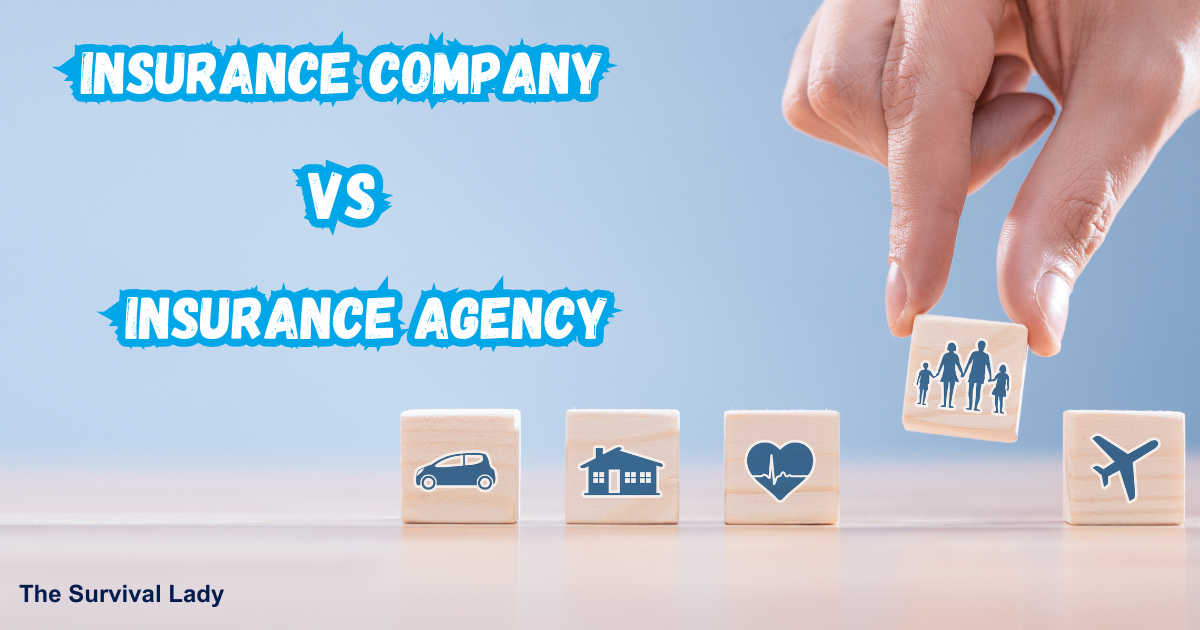
There are many differences between an insurance company and an insurance agency. The main difference is the insurance company creates and manages the policies the agency sells the policies and services them.
An insurance company (also known as an insurance carrier) underwrites the policy, sets the rates, receives payments from customers, and pays out on any qualified claim. Sometimes, buying insurance directly from an Insurance Company can be slightly cheaper than purchasing through an agency.
Two main downsides of purchasing your policy directly through the insurance company:
- Impersonal Service – When you call customer service you will be directed to a call center (most likely overseas). The customer service representatives do not have the time to build a relationship with you.
- Limited Options –
An insurance agency (independent insurance agency) represents you (the client) and provides customer service. There are two primary types of insurance agencies: Independent agents (sells insurance policies and products from a range of insurance companies) and Exclusive agents, also known as captive agents (are only authorized to sell insurance policies of a single insurance company).
Pros:
Policy Reviews: Your agency will take the time to review your policy and if you have a large premium increase they will be able to provide you with other options.
Personalized Service: When you call customer service you will reach the agency (99% of the time is local). Your agent will take the time to get to know you and prepare an individualized
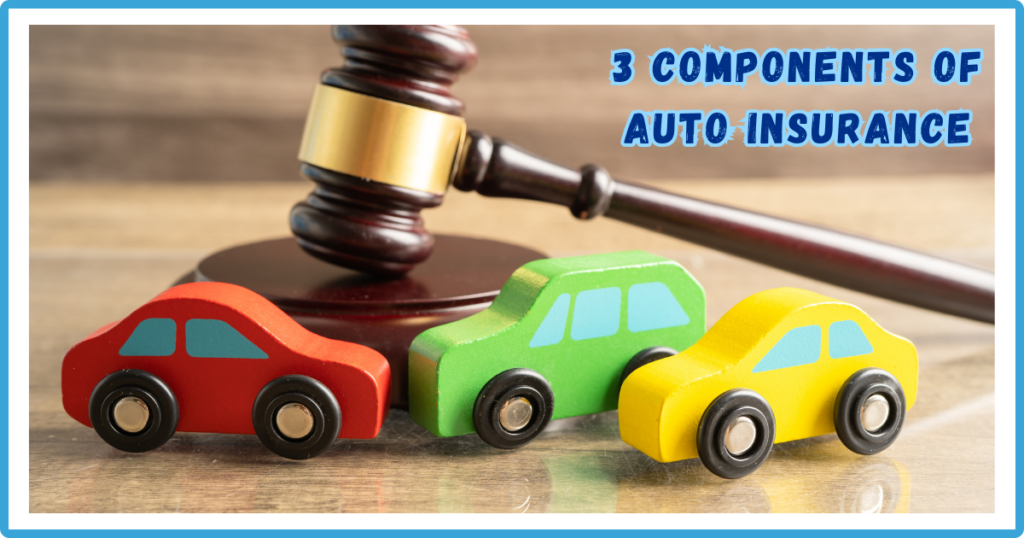
1. Liability
The damage you do to another person, their car, or property is covered under
liability.
2. First-Party Insurance
Auto insurance pays to protect you, your passengers, and your
vehicle through medical payments, comprehensive, and collision coverage.
3. Complying With The Law
Insurance provides protection for drivers, passengers, and others from injury or damage done by someone who would have no way to pay for any damage they do.
Auto Insurance Coverages
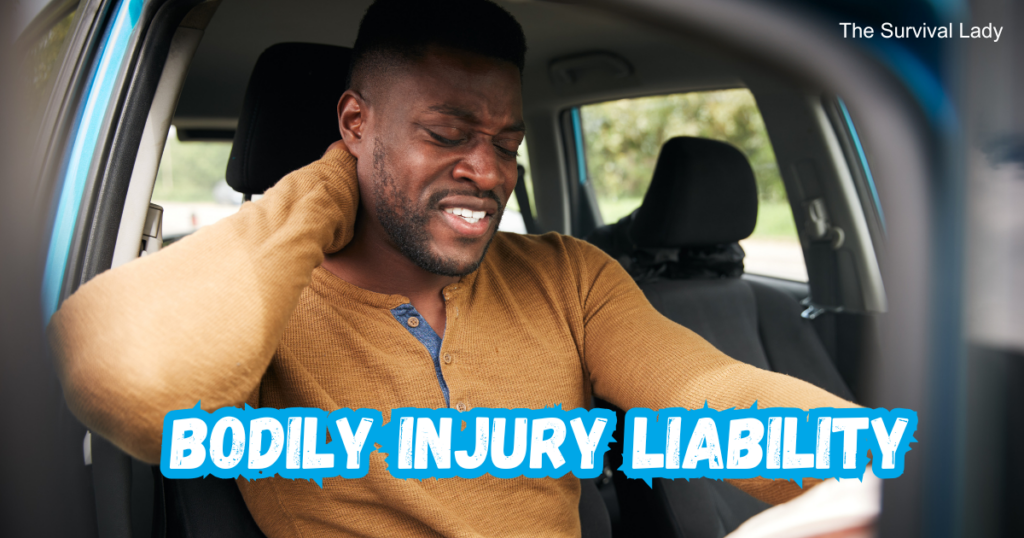
Bodily Injury Liability Coverage is also known as BI. BI is the part of your insurance that helps pay for injuries to others if you’re at fault for an accident. It can also help pay for legal fees if you’re sued for damages. In the State of Arizona, the minimum coverage for bodily injury liability is $25,000 per person/$50,000 per accident.
What Does It Cover?
- Medical Bills
- Lost Wages
- Pain & Suffering
- Legal fees for others injured in an accident if you are at fault
How It Works
- Coverage Limits: Each person injured in an accident has a per person limit
- Excess Expenses: If the cost of someone’s injuries exceeds your bodily injury coverage, you may be responsible for covering the difference
Example of BI Coverage
You are in an auto accident that you are found to be at fault. Three people are injured in the accident. Your bodily injury coverage is state minimum ($25,000/person and $50,000/accident). The most your bodily injury liability would pay for their combined expenses is $50,000 (and only up to $25,000 for each injured person).
*Please note: BI coverage doesn’t cover your own injuries

Property Damage Liability Coverage helps pay for the cost of repairing or replacing another person’s property if you’re at fault for an accident. In the State of Arizona, the minimum coverage for property liability is $15,000 per accident.
What It Covers
- Damages to another person’s vehicle
- Damage to another person’s property (i.e. fence, building, etc.)
- Removal of debris (i.e. damaged tree or signs)
- Legal Expenses related to property damage
Example of Property Damage Liability Coverage
You swerve to miss a deer, and you hit a parked car. That parked car ends up going through a fence. Your property liability coverage is State Minimum ($15,000 per accident). Your property liability coverage would pay for repairs for the parked car and the fence up to $15,000. If the amount of damage exceeds $15,000 you could be responsible for paying for the remaining amount of repairs.
*Please note: Property Liability coverage doesn’t cover damage to your own car
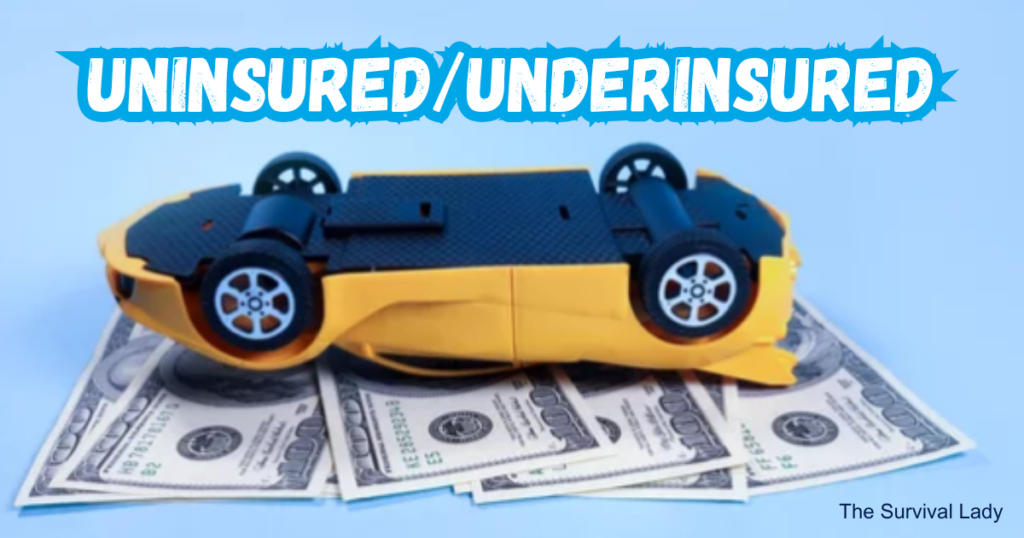
Uninsured Motorist Bodily Injury is also known as UMBI. UMBI helps pay for the cost if you or your passengers are injured by the driver of an uninsured vehicle.
Example of UMBI Coverage
You are hit by an uninsured driver, and you are injured. You have uninsured motorist bodily injury coverage for $25,000 per person and $50,000 per accident. You end up having $20,000 in medical bills, you can use your UM coverage to cover your medical bills.
Underinsured Motorist Bodily Injury is also known as UIMBI. UIMBI helps pay for the cost if you or your passengers are injured by the driver who has auto insurance, but their coverage isn’t enough to cover your or your passengers’ injuries.
Example of UIMBI Coverage
You were injured in an accident. You have medical bills totaling $30,000 and the at fault driver has state minimum liability coverage. Your UIMBI would pay the remaining $5,000.
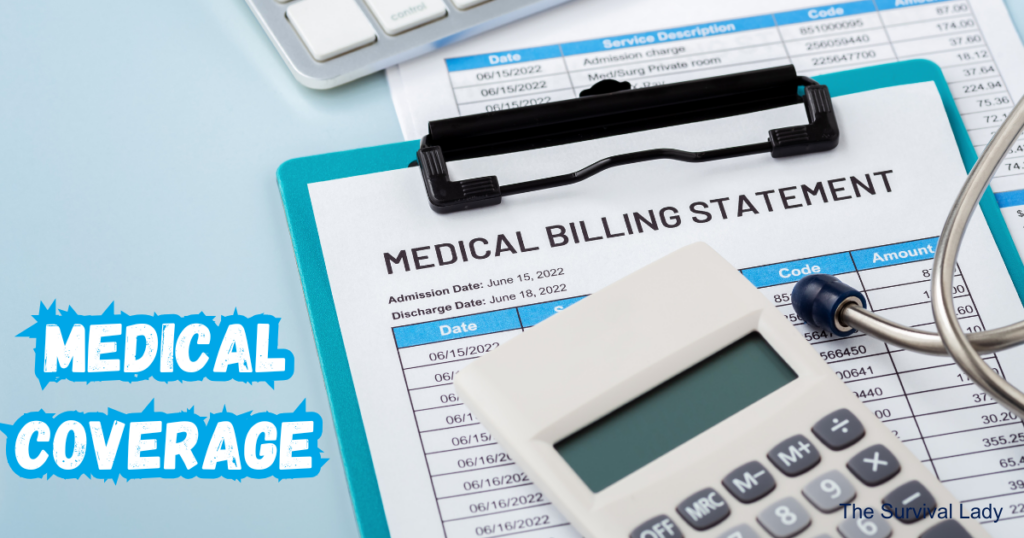
Medical Coverage is also known as MedPay. MedPay is optional coverage that helps pay for necessary and reasonable medical and funeral expenses if you or your passengers are injured in a car accident, no matter who is at fault. MedPay can also cover you if you are injured as a pedestrian by a vehicle or a passenger in another car.
What It Covers
- Doctor, hospital, and emergency room visits
- Ambulance and emergency medical technician fees
- Health insurance deductibles and co-pays
- Surgeries, X-rays, or prostheses
- Nursing services and care
- Funeral Expenses
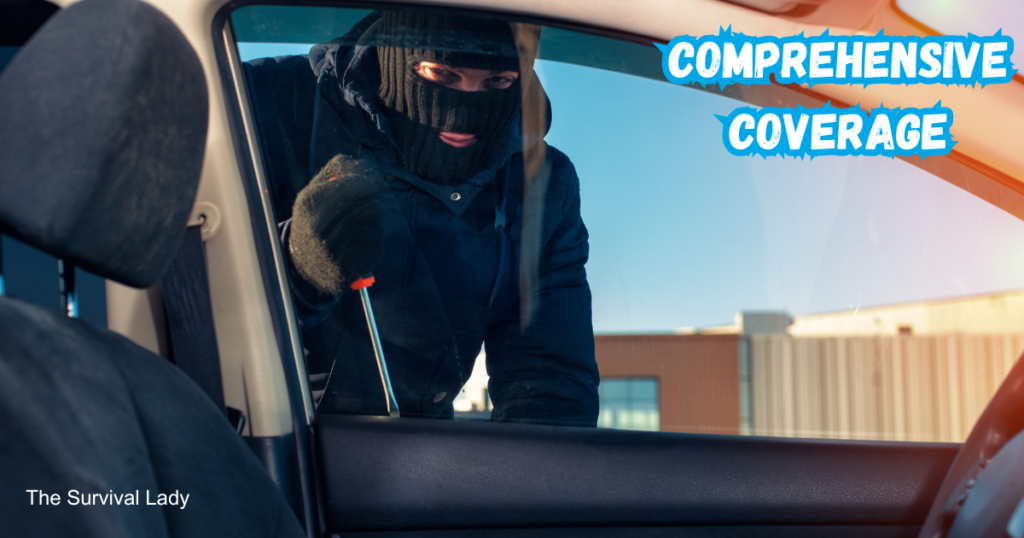
Comprehensive Coverage is also known as Comp. Comp coverage helps pay for losses or damage to your car caused by theft, vandalism, hail, wind, fire, animals, etc. (loss or damages not caused by an auto accident). Usually required by lenders if leasing/financing your car.
How It Works
When adding comprehensive coverage to your policy you select a deductible. In the event of a covered claim, you would pay the deductible, and the insurance will pay the remaining cost of repairs or a replacement vehicle.
Example from Farmers Insurance Claim Hall of Fame:
A game sportsman went hunting for turkeys one day. He parked his prized, 4DW pickup truck (in perfect condition and freshly waxed) in a nearby pasture and strolls into the woods.
After an unsuccessful day on the hunt, he returns to the pasture to find four horses surrounding his truck, licking its exterior. When he gets closer, he sees distinctive teeth marks all over the truck! The horses had even chewed on the fenders and dented the doors. He couldn’t get the horses to stop grazing on his truck until he drove away!
As he was driving away, the owner remembered the special polish used after his most recent car wash: a brand of carnauba car wax that carries the unmistakable (and apparently irresistible) scent of bananas.
THE RESOLUTION: After filing a comprehensive claim, Farmers paid the claim for the cost of repairs to the damaged truck (minus the insured’s deductible). The owner likely switched his car wax of choice to something a little less delicious.
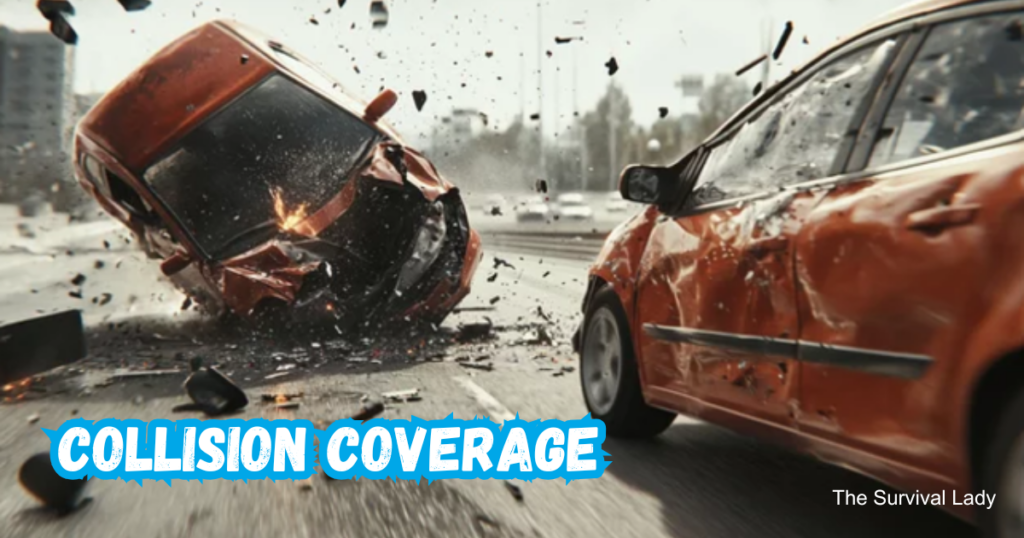
Collision Coverage coverage pays for damage caused by physical contact with another vehicle or object, such as a tree, guardrail, or person. It covers you regardless of who is at fault. Usually required by lenders if leasing/financing your car.
How It Works
When adding collision coverage to your policy you select a deductible. In the event of a collision (no matter who is at fault), you would pay the deductible, and the insurance will pay the remaining cost of repairs or a replacement vehicle.
Example of Collision Coverage
It’s Monday morning and you are extremely late for work. You are down the street from the office, and you speed up to make the light before it turns red. You are not able to stop in time before hitting the car that is in front of you. The accident caused $1,500 in damage to your vehicle. On your insurance policy you have a $250 deductible for your collision coverage. You will pay the first $250 for repairs and then your insurance will pay the remaining $1,250.
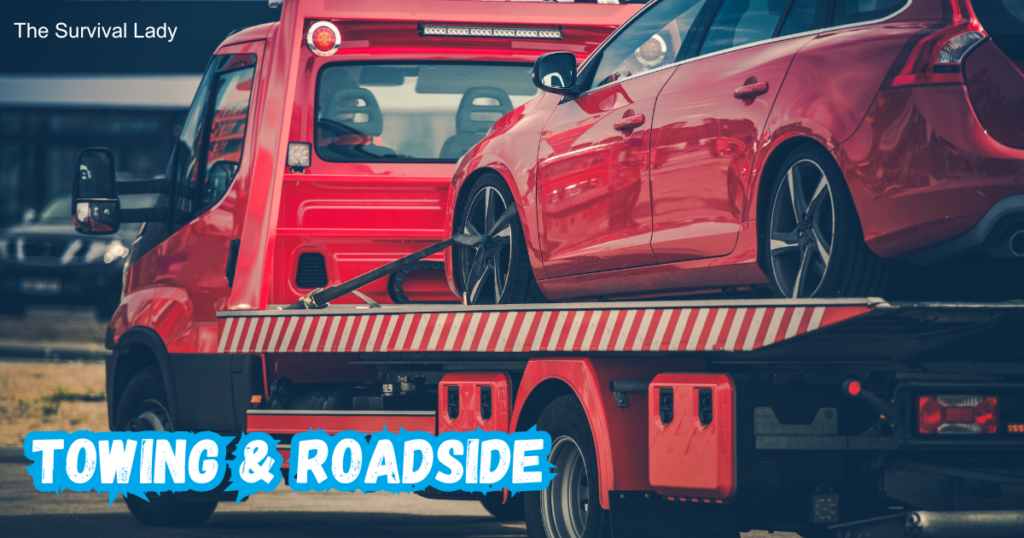
Towing & Roadside Provides 24/7 roadside assistance if your car is disabled. It helps pay for towing, tire changing, locksmith service, and jumpstart.
How It Works
You always want to check with your agent but usually, you have two options when using towing & roadside coverage
- Use the company of your choice, pay for their services, and submit your receipt to be reimbursed
- Submit a towing & roadside claim and request a company be sent to your location

Rental Reimbursement Coverage helps pay for renting a car for a certain amount each day and a maximum number of days while your vehicle is being repaired from a covered loss. It does not apply if your vehicle needs routine maintenance work or if you need to rent a car on vacation.
How It Works
If your policy includes rental car coverage, it can apply if your car is not drivable or if it’s in the shop for repairs. Rental reservations will be discussed with your claim representative. Coverage typically lasts up to 30 days.
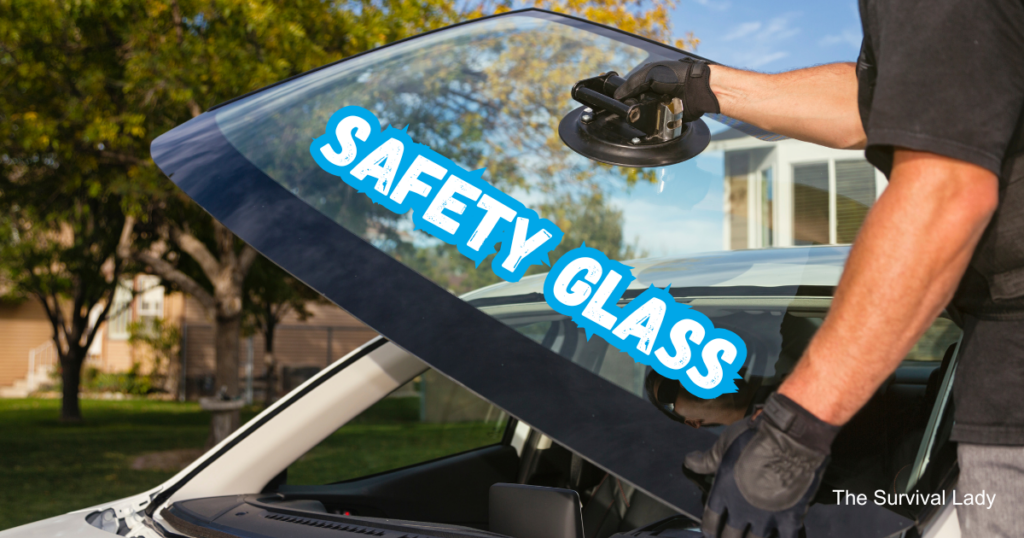
Safety Glass – Waiver of Deductible offers a $0 deductible on glass repair and replacement. Only available if your insured vehicle has comprehensive coverage.
How It Works
You should always check with your agent but if you have safety glass coverage listed on your insured vehicle and you need a windshield replacement or repair, you usually have the following options:
- You can submit a glass claim & schedule an appointment (usually easiest done online)
- Contact your agent they probably have a few approved companies that they know and trust. They can provide the the glass company with all the required information and the glass company can help you file a claim
- Use the company of your choice, pay for their services, and submit your receipt to be reimbursed
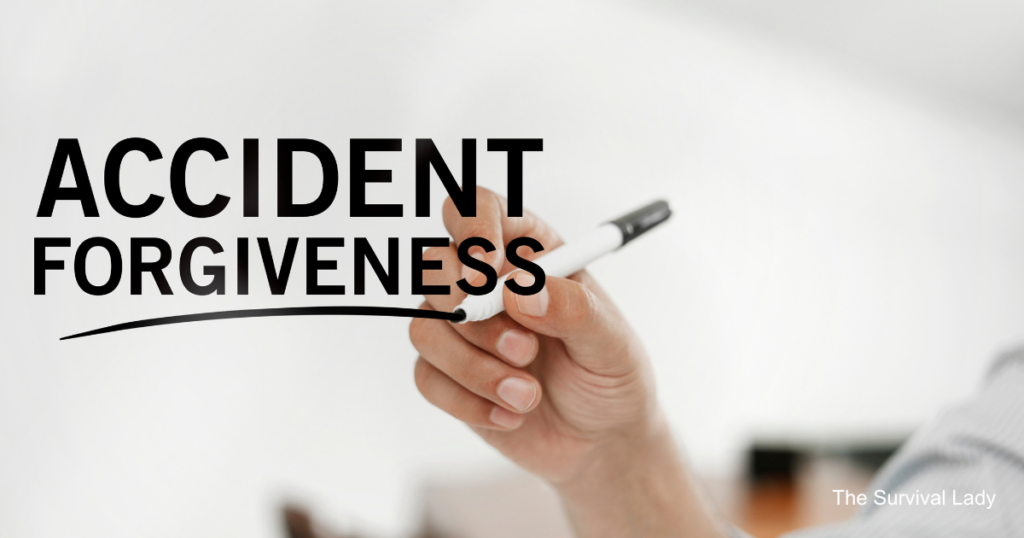
Accident Forgiveness optional add-on coverage that prevents your premium from increasing after you are involved in one at-fault accident.
Download Auto Insurance 101: Coverage Terms
Check Back Soon for Auto Insurance 102
Sign Up for The Survival Lady’s Newsletter
Sign up for The Survival Lady’s newsletter! Get access to new posts before anyone else and get the password for The Survival Lady’s resource page!
- By submitting your information you are giving permission to The Survival Lady to email you. You can unsubscribe from The Survival Lady’s mailing list at any time.
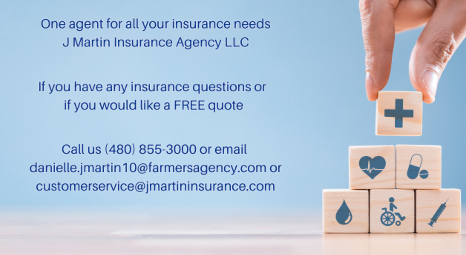
The information contained in this blog post is provided for general informational purposes only. The information is produced from my own personal experiences and personal research. While my main goal is to keep the information up to date and correct, I make no representations or warranties of any kind, express or implied, about the completeness, accuracy, reliability, suitability, or availability concerning this blog post or the information, products, services or related graphics if any contained in this blog post for any purpose. The information is not meant as professional or expert advice, and any reliance you place on such information is therefore strictly at your own risk.
Comments
6 responses to “Auto Insurance 101: The Basics”
Nice blog! Is your theme custom made or did you download it from somewhere? A design like yours with a few simple adjustements would really make my blog stand out. Please let me know where you got your design. With thanks
thank you! I did most of it myself, just with Canva images (which I make myself or use a template and basically recreate it). I use Canva for everything 😀
Thanks for the various tips provided on this blog site. I have realized that many insurance firms offer customers generous discount rates if they prefer to insure a couple of cars together. A significant variety of households own several motor vehicles these days, especially those with more mature teenage young children still living at home, along with the savings in policies can easily soon increase. So it will pay to look for a bargain.
Thank you – I’m glad that you found these tips to be helpful! We do offer a multi car discount for our auto policies and bundling your policies is a pretty big discount (plus having the ease of having all your policies in one agency is always nice). It does pay to look to make sure you are getting the best bargain but I always recommend contacting your current agent before switching your policy. I can’t speak for other agents, but when our agency does a policy review we do the shopping for you, without compromising your coverage, and not all agents provide a validated quote – this will be discussed further in Auto Insurance 102: The Basics 🙂
Your articles are extremely helpful to me. May I ask for more information? http://www.hairstylesvip.com
Thank you, of course is there anything certain that you would like to know about?
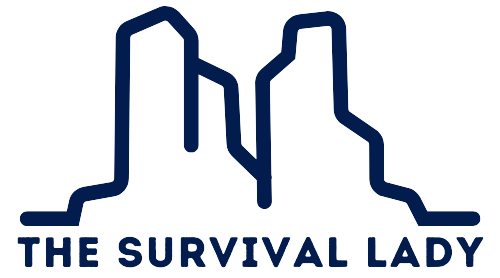
Leave a Reply